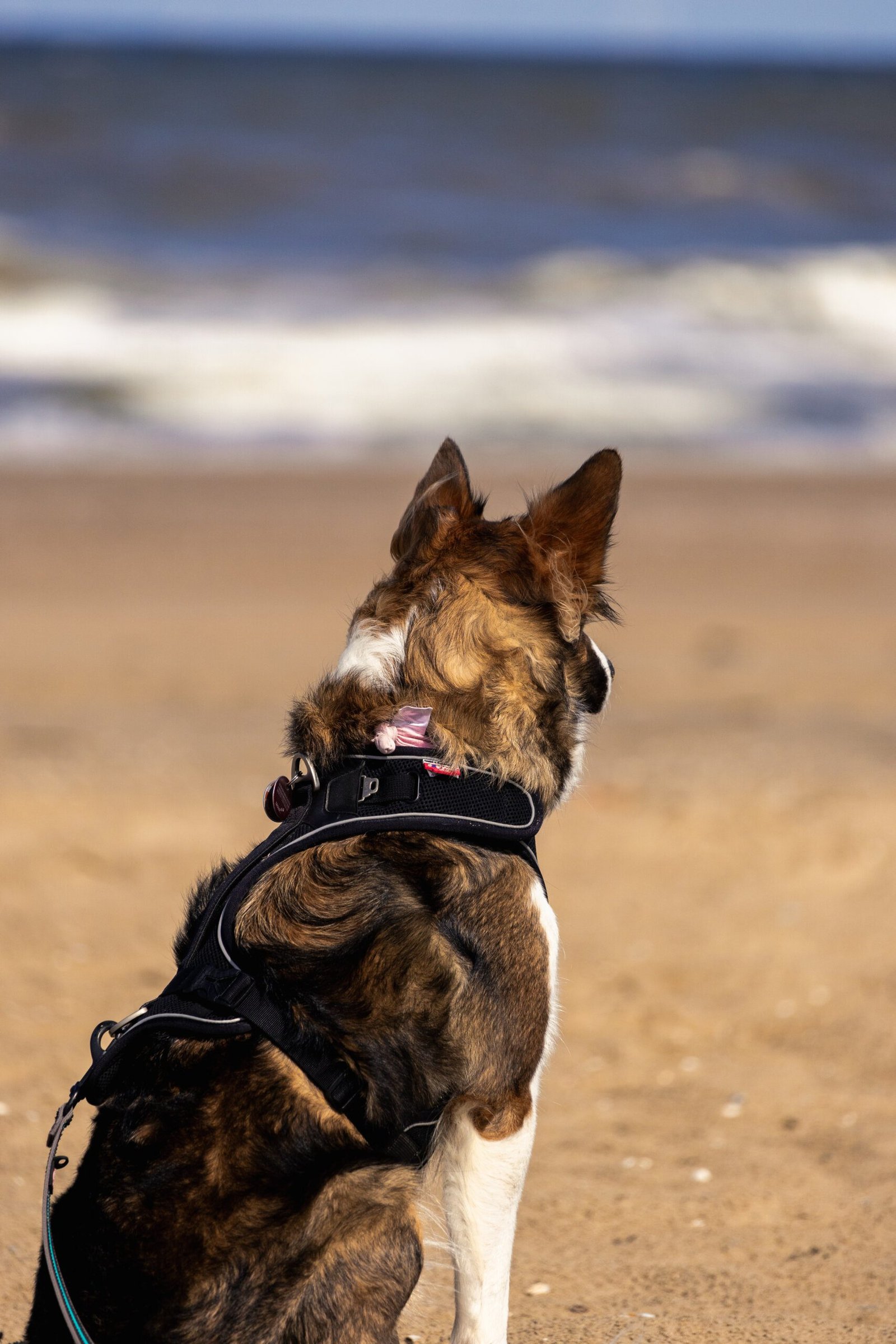Table of Contents
If you’re considering training your furry friend to become a therapy dog in Singapore, you may be wondering about the certification options available to you. Whether you want to offer comfort to those in need or provide support in healthcare facilities, certification is a crucial step in ensuring your dog is qualified for this rewarding role. In Singapore, there are several avenues for therapy dog certification, each with its own requirements and benefits. From the Therapy Dogs Singapore program to the Animal Assisted Intervention International certification, this article will explore the different options available, helping you make an informed decision for your beloved companion.

Introduction
Welcome to a comprehensive guide on therapy dog training and certification in Singapore! If you’ve ever wondered about the world of therapy dogs and how to get involved, you’ve come to the right place. In this article, we will explore what therapy dogs are, the benefits of therapy dog training, and the importance of certification. We will also discuss the certification requirements, organizations in Singapore that offer certification, various training programs available, important skills and commands, factors to consider before getting involved, personal assessment and preparation, costs and fees, and address frequently asked questions. So, let’s delve into the world of therapy dog training and discover how you can make a difference!
Overview of Therapy Dog Training
What is a therapy dog?
A therapy dog is a highly trained and certified dog that provides comfort, companionship, and support to individuals in various settings, such as hospitals, nursing homes, schools, and rehabilitation centers. These dogs undergo specialized training to interact with individuals of different ages and disabilities, helping to alleviate stress, anxiety, and loneliness. Unlike service dogs who are trained to assist individuals with specific tasks, therapy dogs offer emotional support and promote well-being.
Benefits of therapy dog training
Therapy dog training not only benefits the individuals who receive their assistance but also provides numerous rewards for the dogs themselves. Dogs involved in therapy work experience increased socialization, mental stimulation, and a sense of purpose. Participating in therapy dog programs also strengthens the bond between the dog and its handler, promoting a positive and fulfilling partnership.
Importance of certification
Certification is crucial for therapy dogs as it ensures that they meet the necessary standards and are well-equipped to interact with diverse populations. Certification organizations evaluate the dogs’ temperament, obedience, and ability to obey commands in order to assess their suitability for therapy work. Being certified also offers credibility and assurance to facilities and individuals seeking the services of therapy dogs.

Certification Requirements
Age and health requirements
To be eligible for therapy dog certification, dogs generally need to be at least one year old and in good health. This age requirement ensures that the dogs have matured physically and mentally, making them better-equipped to handle the challenges of therapy work. It is important for dogs to be up to date on vaccinations and have regular veterinary check-ups throughout their certification journey.
Temperament assessment
A critical aspect of therapy dog certification is assessing the dog’s temperament. Dogs must display friendly and calm behavior, being comfortable around strangers, other animals, and in various environments. They should demonstrate a natural inclination towards social interaction, showcasing their ability to provide comfort and emotional support without being overly exuberant or aggressive.
Obedience training
Obedience training is essential for therapy dogs to ensure they respond reliably and consistently to their handlers’ commands. Dogs need to be proficient in basic obedience commands such as sit, stay, down, and recall. This training not only helps in maintaining control in potentially challenging situations but also fosters a strong bond between the dog and its handler, enhancing their partnership.
Public access test
The final step in certification is the public access test, which evaluates a therapy dog’s ability to behave appropriately in various public settings. This test assesses the dog’s response to distractions, their ability to walk on a loose leash, and their overall behavior in crowded or busy environments. Dogs must demonstrate good manners, remain calm, and refrain from jumping or lunging at people or other animals.
Certification Organizations in Singapore
National Kennel Club
The National Kennel Club (NKC) is one of the prominent organizations in Singapore that offers certification for therapy dogs. They provide comprehensive assessments and training programs specifically designed for therapy dog handlers. The NKC conducts evaluations and issues certifications to qualifying dogs, ensuring their competence to engage in therapy work.
Singapore Kennel Club
The Singapore Kennel Club (SKC) is another established organization that offers therapy dog certification in Singapore. SKC conducts temperament assessments, obedience training, and public access tests to evaluate the suitability of therapy dogs. They also provide resources and support to handlers throughout the certification process.
Animal Therapy Association of Singapore
The Animal Therapy Association of Singapore (ATAS) focuses on promoting animal-assisted therapy and certifies therapy dogs in collaboration with professionals in the healthcare and social service sectors. ATAS emphasizes continuing education and provides ongoing support to certified teams, fostering a community of passionate and knowledgeable therapy dog handlers.

Training Programs and Courses
Basic obedience training
Before embarking on therapy dog training, it is essential to ensure that your dog has a solid foundation in basic obedience skills. Basic obedience training teaches dogs essential commands such as sit, stay, down, and recall. Additionally, it focuses on leash manners, proper socialization, and addressing common behavioral issues, creating a well-rounded and well-behaved companion.
Therapy dog training programs
Several training programs in Singapore specialize in therapy dog training. These programs are designed to prepare dogs and their handlers for the specific challenges they may encounter while working as therapy teams. Training programs typically cover advanced obedience, desensitization to medical equipment, practicing appropriate interactions with individuals with disabilities, and simulated therapy sessions to allow dogs to acclimate to therapy environments.
Online certification courses
If attending in-person training programs is challenging, online certification courses offer a convenient and flexible alternative. These courses provide comprehensive materials, video demonstrations, and step-by-step guidance to aid aspiring therapy dog handlers in training and preparation. Online courses often have interactive elements, allowing handlers to receive feedback and support from experienced professionals.
Important Skills and Commands
Socialization
Socialization is a vital skill for therapy dogs as they encounter a variety of people, situations, and environments in their work. Proper socialization exposes dogs to different stimuli, ensuring they remain calm and composed in new or potentially stressful situations. It helps dogs become comfortable around individuals of all ages, other animals, medical equipment, and crowded surroundings.
Reliability
Therapy dogs must exhibit reliable behavior, responding promptly and consistently to their handler’s commands. Reliability ensures the safety of the dog, their handler, and the individuals receiving the therapy. Consistency in behavior and command execution helps establish trust and confidence in the therapy dog, creating a positive therapeutic experience.
Leave it
The “leave it” command is crucial in therapy dog work as it teaches dogs to ignore distractions and potential hazards. This command is especially important when working with individuals who may drop medications, food, or other objects. By teaching dogs to “leave it,” handlers can maintain control and prevent unintended ingestion, allergies, or accidents during therapy sessions.
Stay
The “stay” command is essential for therapy dogs, allowing them to remain in a designated position until instructed otherwise. A solid “stay” command ensures that dogs do not wander off, jump on individuals, or engage in unwanted behaviors during therapy sessions. It provides stability and predictability, creating a calm and controlled environment for all involved.
Sit
The “sit” command is a fundamental obedience skill that therapy dogs should master. It helps dogs maintain a polite and well-mannered demeanor, especially when interacting with individuals who may have mobility issues or limited physical contact. By sitting on command, therapy dogs can provide comfort and support without overwhelming those they assist.
Down
The “down” command teaches dogs to lie down on command and remain in a relaxed and calm position. This command is particularly useful in situations where individuals benefit from having the therapy dog at a lower height, such as children, individuals in wheelchairs, or those who prefer not to be jumped on or nudged.
Heel
The “heel” command is vital for therapy dogs, ensuring they walk calmly and closely alongside their handlers. Therapy dogs should not pull on the leash or forge ahead, but instead maintain a controlled and attentive walking position. Walking in a heel position allows therapy dogs to navigate through crowded hallways, medical facilities, or busy public areas without causing discomfort or inconvenience.
Walking on a loose leash
Walking on a loose leash is an important skill for therapy dogs as it promotes relaxation and prevents any unnecessary tension or strain on the leash. Dogs should walk alongside their handlers without pulling, lunging, or zigzagging. A loose leash allows therapy dogs to comfortably move, respond to their handler’s cues, and maintain a steady pace during sessions.
Recall
The “recall” command is vital for therapy dogs, enabling them to return to their handler promptly when called. A strong recall command ensures that therapy dogs can be called away from potentially challenging situations or distractions. It also allows handlers to maintain control and redirect their attention when necessary, ensuring the safety and well-being of everyone involved.
Important Factors to Consider
Time commitment
Becoming a certified therapy dog team requires a considerable time commitment from both the handler and the dog. It involves attending training sessions, practicing obedience skills, administering socialization exercises, and undergoing evaluations. Additionally, therapy dog teams need to allocate time for regular therapy sessions at various facilities. Therefore, it is essential to consider whether you have the time to devote to training and ongoing therapy work.
Financial considerations
There are financial aspects to consider when pursuing therapy dog training and certification. The costs may include training program fees, certification fees, veterinary expenses, grooming, and maintenance costs, as well as any necessary equipment such as an approved therapy dog vest or identification tags. It is important to assess your budget and ensure that you can comfortably afford the expenses associated with therapy dog work.
Dog breed suitability
While therapy dogs can come in various breeds and sizes, certain breeds may be more suitable for therapy work. Breeds known for their calm temperament, patience, and people-oriented nature are often preferred. However, individual dogs within any breed can possess the qualities necessary for therapy work. Assessing your dog’s personality, energy level, and compatibility with therapy work requirements is crucial in determining their suitability for certification.
Personal Assessment and Preparation
Assessing personal suitability for therapy dog work
Before embarking on therapy dog training, it is important to assess your own suitability for this type of work. Being a therapy dog handler requires patience, empathy, and a genuine love for both people and animals. It involves being able to handle potential stressors, maintaining professionalism, and adapting to various environments and situations. Reflecting on your personal skills and characteristics will help determine if therapy dog work aligns with your values and strengths.
Identifying potential challenges
Therapy dog work can present various challenges that need to be considered and addressed. These may include encountering individuals with allergies or fear of dogs, navigating potentially stressful environments, handling difficult or emotional situations, and managing the emotional impact of working with individuals facing health or emotional challenges. Identifying potential challenges beforehand allows you to prepare accordingly and develop coping strategies.
Preparation and training for handlers
Handlers play a crucial role in therapy dog work. It is essential for handlers to dedicate time to their own training and education. Handlers can take courses on canine behavior, communication, and handling techniques to enhance their skills as well as gain a deeper understanding of the therapeutic benefits their dogs provide. Additionally, ongoing education and staying up-to-date with therapy dog best practices are important to ensure a smooth and successful therapy dog journey.
Costs and Fees
Certification fees
Certification fees can vary depending on the organization and the services provided. These fees typically cover the evaluation, administration, and processing of certification applications. It is important to research and consider the costs associated with certification to ensure it fits within your budget.
Training program fees
Training program fees vary depending on the duration, intensity, and services included in the program. Training programs may offer group classes, private sessions, or a combination of both. It is crucial to consider the costs associated with training programs and choose one that best fits your needs and budget.
Additional costs
There may be additional costs associated with therapy dog work, including veterinary expenses for regular check-ups and vaccinations, grooming costs to maintain the dog’s appearance and cleanliness, and purchasing equipment such as a therapy dog vest or identification tags. It is important to factor in these potential expenses when considering therapy dog training and certification.
Frequently Asked Questions
What are the benefits of therapy dog certification?
Therapy dog certification offers numerous benefits. It ensures that the dog has undergone comprehensive training and assessments, making them well-prepared for therapy work. Certification promotes credibility and trust between facilities, individuals, and therapy dog teams, increasing opportunities for therapy visits. Additionally, certification allows handlers to access support and resources from certification organizations, facilitating a positive and successful therapy dog experience.
Can any dog become a therapy dog?
While therapy dogs can come from various breeds and backgrounds, not every dog is suitable for therapy work. Dogs need to possess specific temperament traits, such as being friendly, calm, and well-behaved, to succeed in this role. Additionally, dogs must be at least one year old and in good health. Assessing your dog’s personality, energy level, and compatibility with therapy work requirements is crucial in determining if they have the potential to become a therapy dog.
How long does therapy dog training take?
The duration of therapy dog training can vary depending on various factors, including the dog’s prior training and temperament, the handler’s experience, and the training program chosen. Typically, therapy dog training can range from several months to a year or more. The training process involves developing basic obedience skills, addressing specific therapy-related training, and preparing for certification evaluations.
Do therapy dogs require specific breeds?
Therapy dogs do not require specific breeds. While certain breeds are commonly seen in therapy dog work due to their temperament and qualities, any individual dog can potentially become a therapy dog if they possess the necessary traits. Temperament, obedience, and reliability are more important factors than the breed itself when considering a dog for therapy work. The focus should be on the dog’s suitability, rather than adherence to breed stereotypes.



